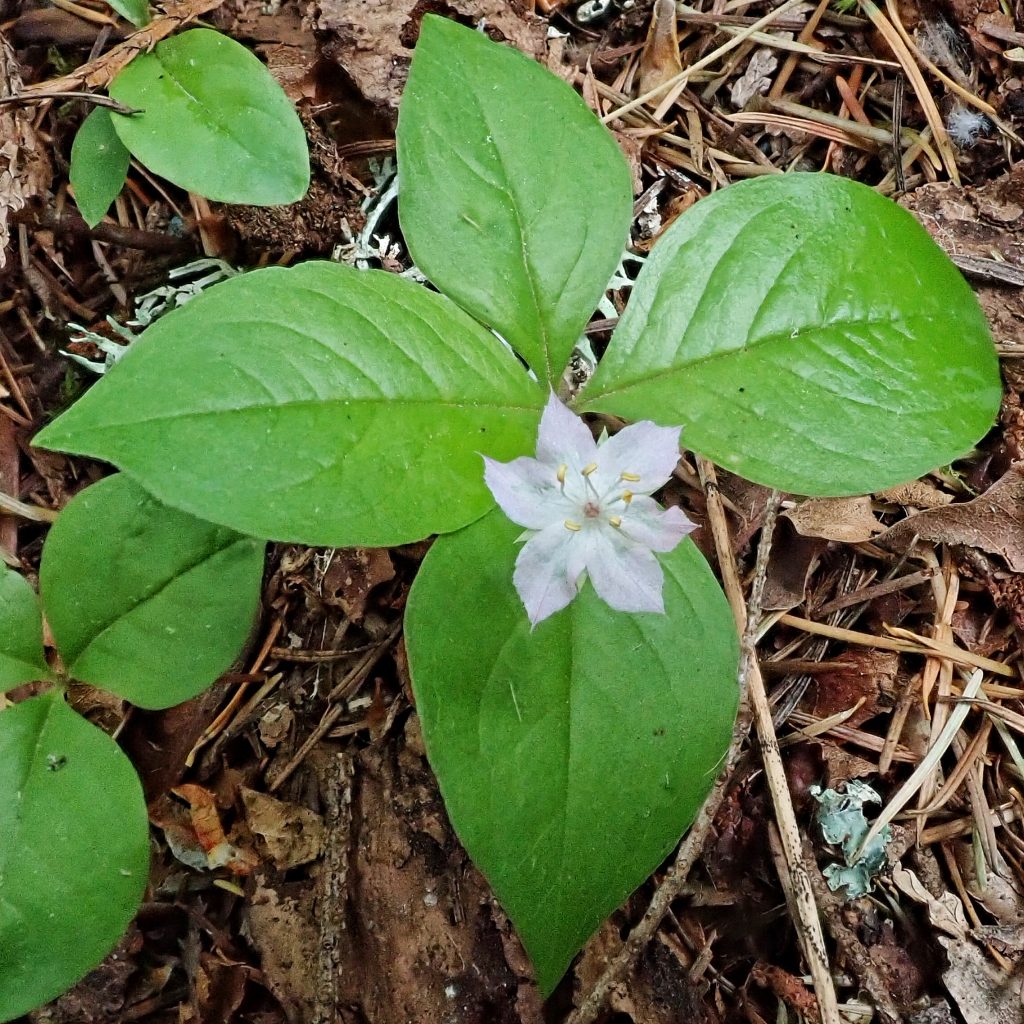
When I first found and identified this species a decade ago I knew it as Trientalis latifolia, in the family Primulaceae. Some time later, after certain molecular data had made its way through the pipeline, I saw it listed as Trientalis borealis ssp. latifolia, in the family Myrsinaceae. And now I see that Trientalis has been synonymized with Lysimachia, which was then moved into Primulaceae, and what is now Lysimachia latifolia once again has full species status.
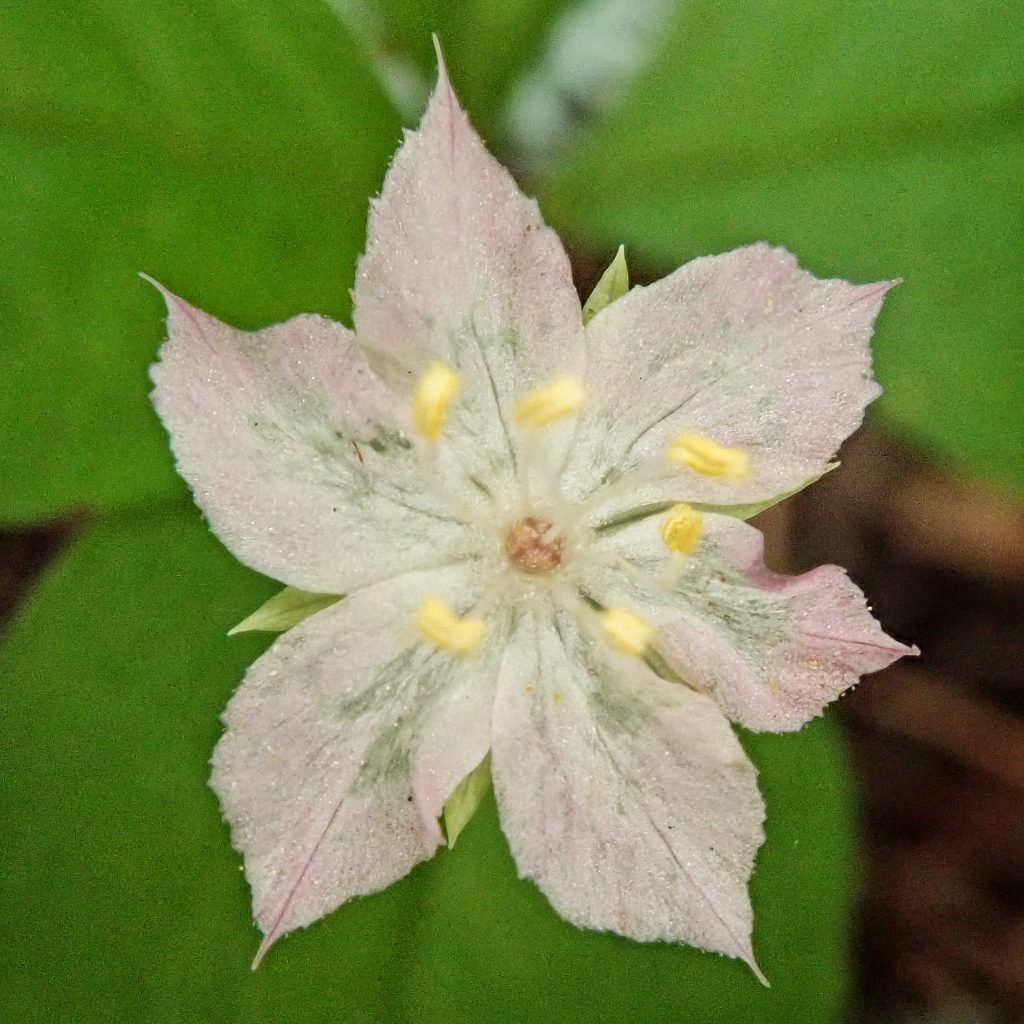
Though it may seem willy nilly to us civilians, changes in taxonomy are always based on the best available information. For one thing our concept of what constitutes the limits of a species is constantly evolving, especially in the world of botany. And any changes at the generic or familial level are based on attempting to achieve monophylogeny, which is simply having a single common ancestor for all members of the group. I have no doubt that the combined efforts of the morphologists and molecular biologists will someday result in a stable and coherent taxonomy, but I seriously doubt I’ll live long enough to see it.
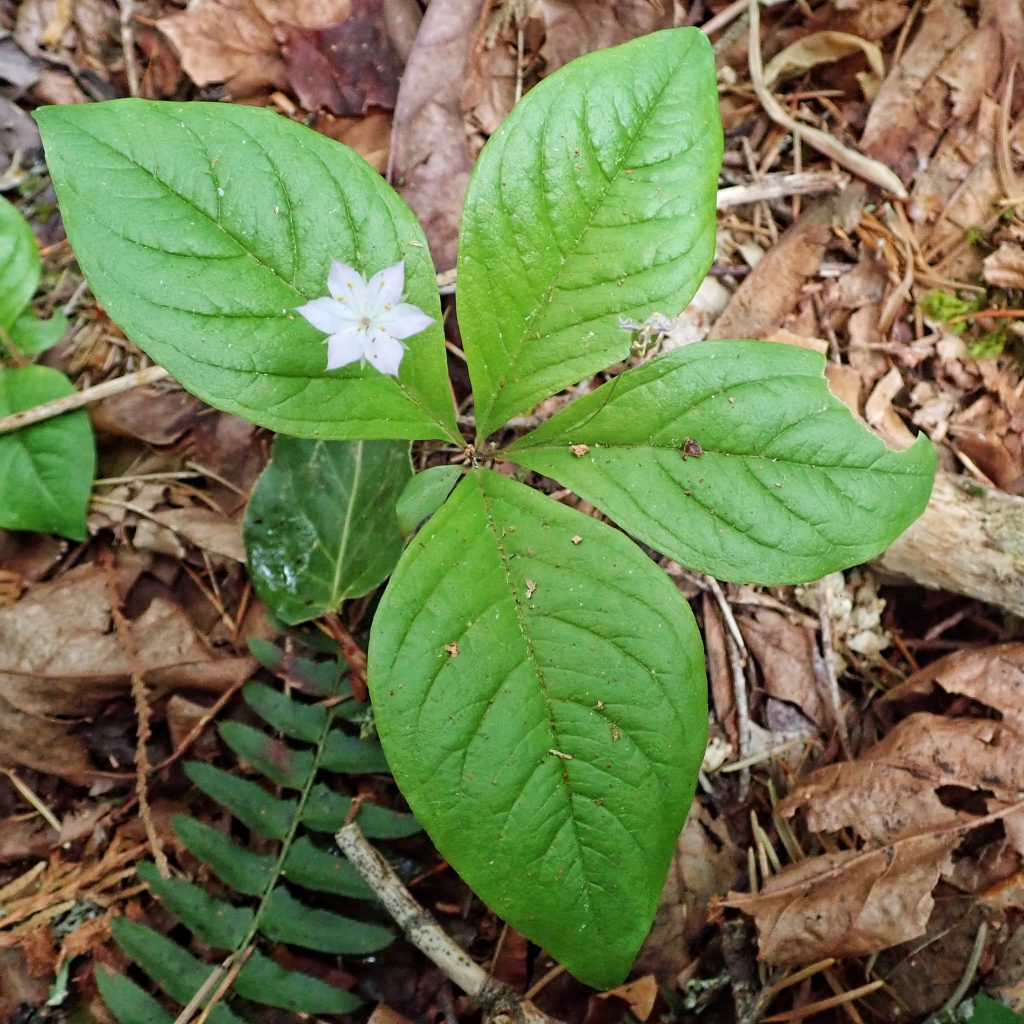
With its wonderful little star shaped flowers (on a pedicel so thin they appear to be floating) above an oftentimes nearly geometrical cluster of leaves, Lysimachia latifolia is always a joy to find in bloom, and another of those small wildflowers that compel dropping to the knees for a closer look.Some of the common names for this species include starflower, broad-leaved starflower, western starflower, Pacific starflower, chickweed wintergreen, and Indian potato. That last one refers to a small bulbul at the base of the stem, but I can find no records of any cultures using this species for food. Nor can I find any references to its use in herbal medicine.
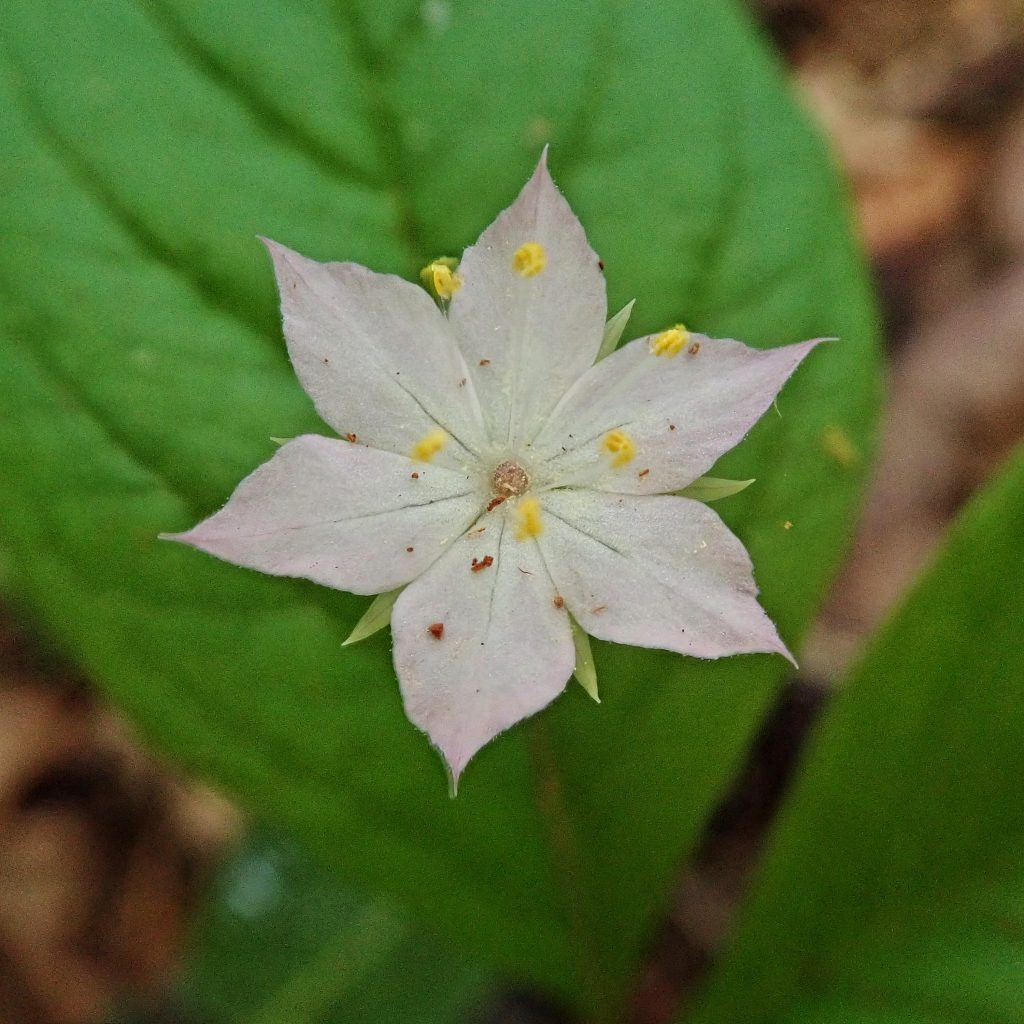
Description-Perennial; short (usually less than 10”) plant with fairly large, broad leaves with rounded to mildly pointed tips, in the terminal cluster, and drastically smaller (or lacking) leaves on the lower stem; flower stem (pedicel) shorter than any of the terminal leaves; 1-5 small (5-9mm) 6 petalled light pink to rose or pinkish lavender flowers.
Similar species– Lysimachia europaea has flower pedicels longer than any leaf on the uppermost cluster; L. borealis has narrower, lanceolate leaves with pointed tips, and grows further east- that alone differentiates it from some narrower leaved specimens of L. latifolia which grow along the coast.

Habitat– Moist to mesic conifer and mixed forests, riparian corridors, up to 4500’ elevation.
Range-West Coast native; in our region found primarily west from the east of the Cascades, western slopes and foothills of the Rockies, Wallowas, Blues, Ochocos, and nw California.
Reproductive timing– April to July; asexual reproduction via tubers is more prevalent than by seed.
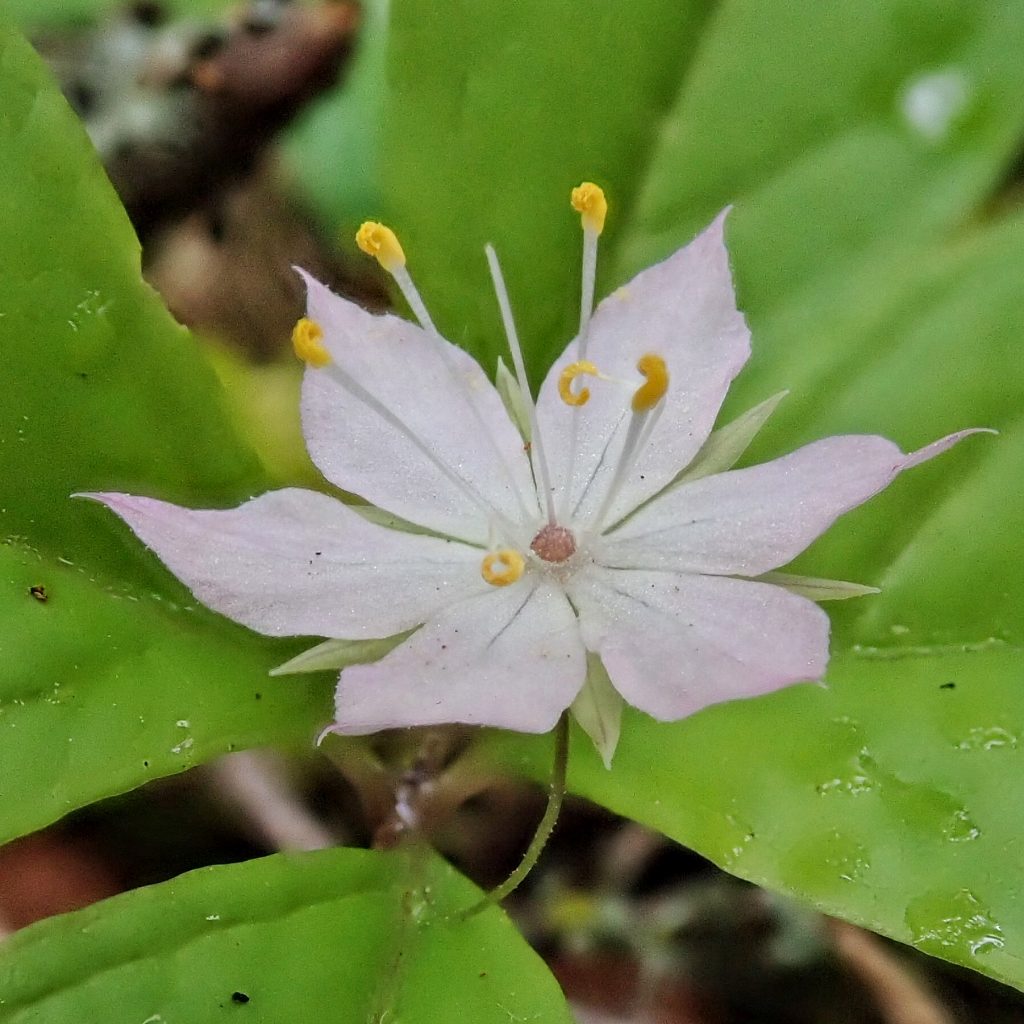
Eaten by-Slugs and snails may feed on the leaves, and there were obvious chunks missing from some of the leaves; some small mammals have been reported to eat the seeds.
Etymology of names–Lysimachia is from the Greek for ‘dissolving strife’. Macedonian legend credits King Lysimachus with using a member of this genus (also known as loosestrifes, although they are not even in the same family as ‘true loosestrife’, which are in the genus Lythrum) to calm a mad ox. The specific epithet latifolia is from the Latin for ‘broad leaved’, and the broad leaves of this plant do help to differentiate it from others in the genus.
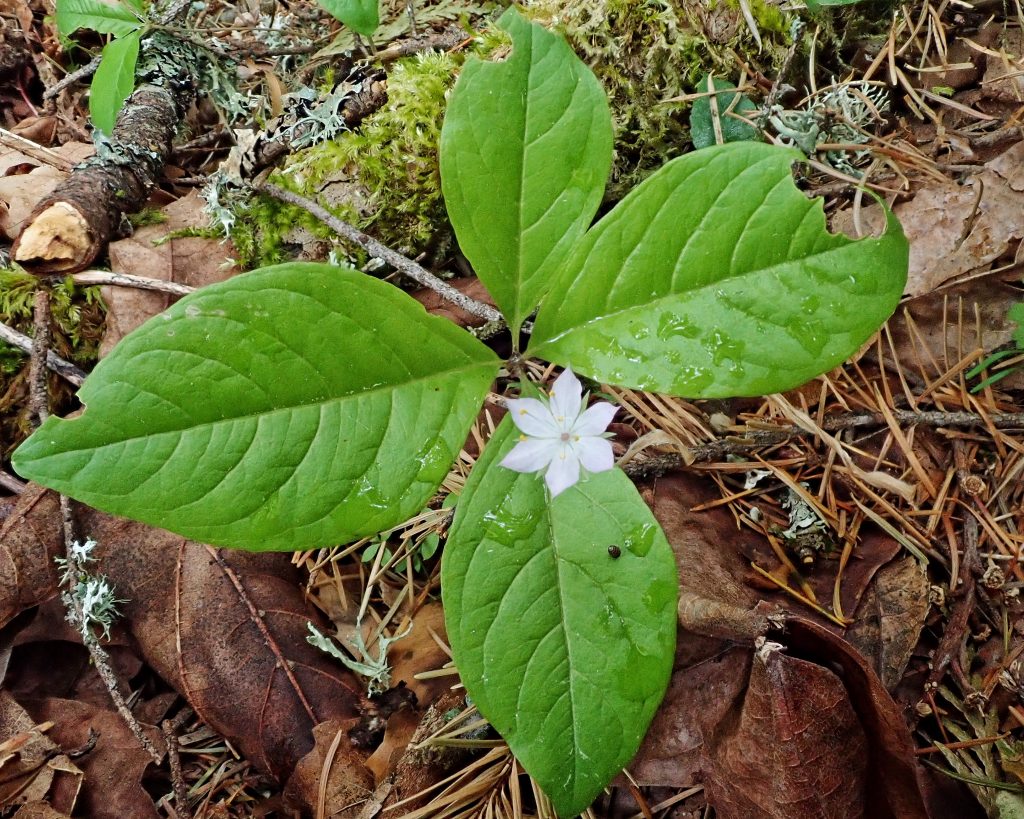
https://www.wnps.org/native-plant-directory/35-lysimachia-latifolia
http://biology.burke.washington.edu/herbarium/imagecollection/taxon.php?Taxon=Lysimachia%20latifolia
Lysimachia septemfida (Primulaceae), a new species from Yunnan, China – ScienceDirect
http://www.efloras.org/florataxon.aspx?flora_id=1&taxon_id=250092250
https://depts.washington.edu/propplnt/Plants/Trientalis%20latifolia.htm
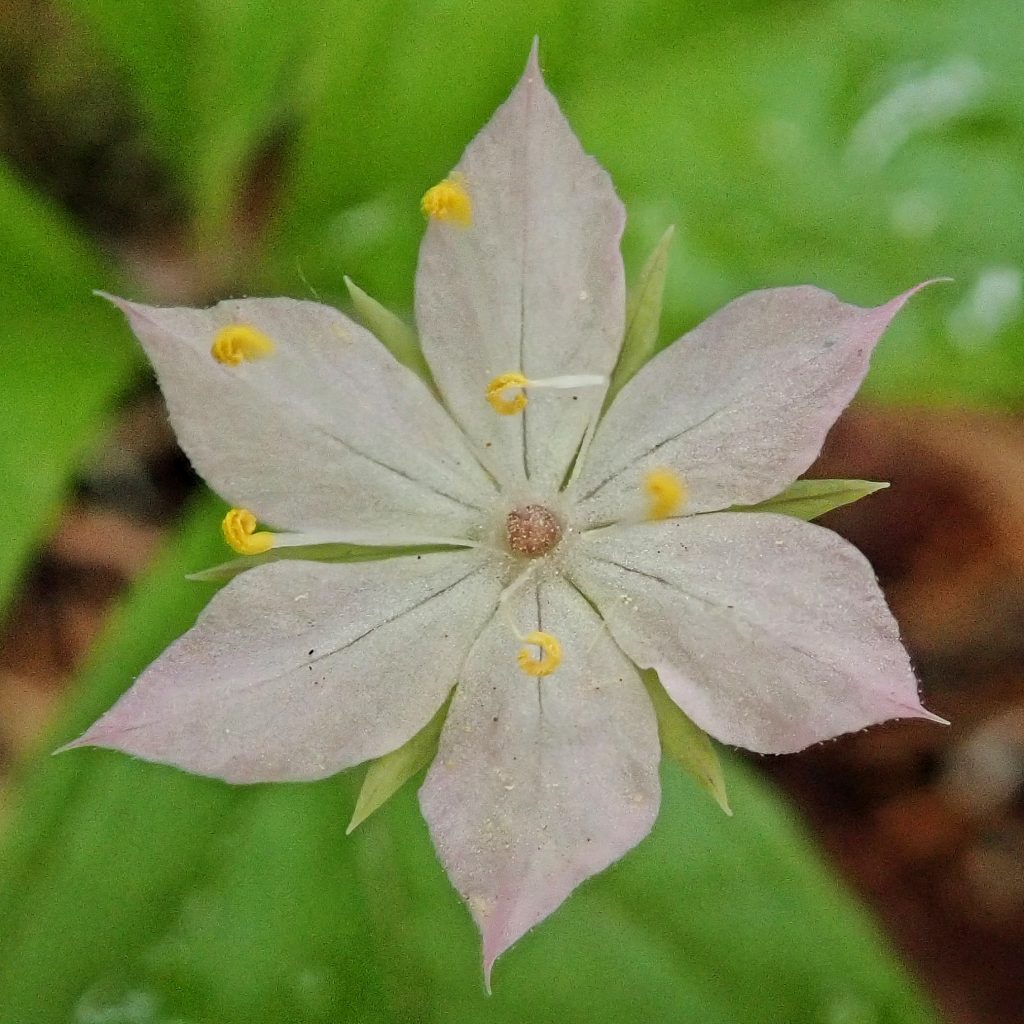
Great pictures of this wonderful little star ⭐️ flower!